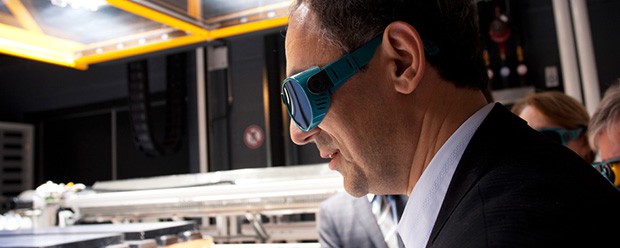Students design energy-efficient building in nine days
Imagine designing a building that produces as much electricity as it consumes. Now imagine doing it in only nine days.
This is the challenge posed to 21 postgraduate students participating in the PhD Summer School at Concordia, which began August 20 and runs to August 28.
Residential and commercial buildings consume over half of Canada’s electricity production and as technologies advance, researchers and engineers continue to explore ways for building design to become more energy efficient.
The nine-day intensive course is presented by the Natural Sciences and Engineering Research Council of Canada (NSERC) Smart Net-Zero Energy Buildings Strategic Research Network (SNEBRN) and the International Association of Building Physics. The course focuses on the science of net-zero energy design and its place in the future of building engineering.
Gerald Parnis, research associate in Concordia’s Department of Building, Civil and Environmental Engineering, explains that as a leader in the field the university is well positioned to host this event.
“Concordia is the only university in Canada that has a building engineering program with both an undergraduate and a doctoral degree offered,” he says. “It’s well established and it includes many well-published academics.”
In addition, Concordia is the headquarters for SNEBRN, a network that consists of 29 Canadian researchers from 15 universities who collaborate on smart net-zero energy buildings and technology.
“There’s an education component to what SNEBRN tries to do,” explains Parnis. That’s why on top of funding research, the network took a lead role in realizing the summer school project.
The course began as the brainchild of Andreas Athienitis, a professor in Concordia’s Department of Building, Civil and Environmental Engineering and the scientific director of SNEBRN. It is co-organized with the International Association of Building Physics.
The summer school brings together 21 students from 6 Canadian and 7 overseas universities as well as 14 researchers from Canada, Denmark and the US.
Each day, students work with different lecturers to learn about energy-efficient design and further develop their modelling skills. During the course, students are expected to design a net-zero energy building and present it on the last day along with justifications for their choices.
“The goal is to have students design a house that integrates the various technologies they learned throughout the week,” says Parnis. “We’re developing expertise in modelling, simulation and design.”
He explains that this summer school provides a unique opportunity for participants to explore the newest research and technologies.
“The topics that will be taught aren’t extensively offered in standard undergrad or post-grad studies,” says Parnis. “We’re developing education materials that will become part of university curriculum eventually.”


